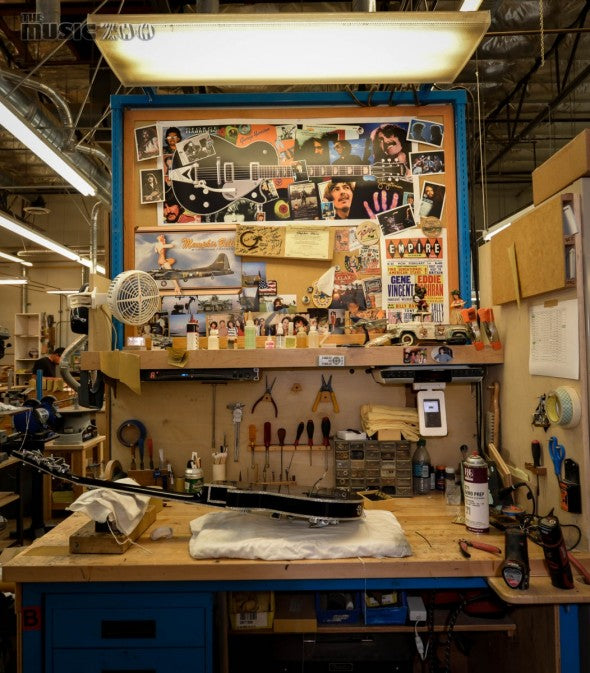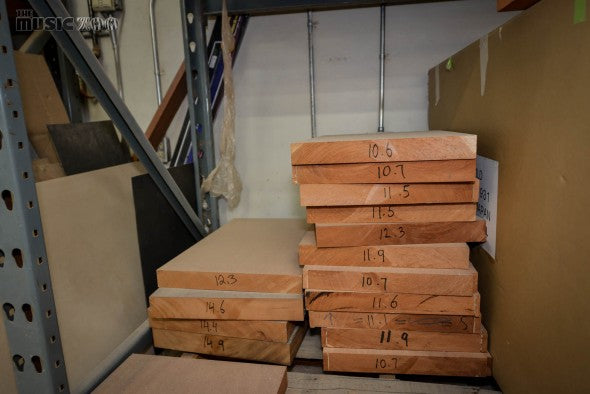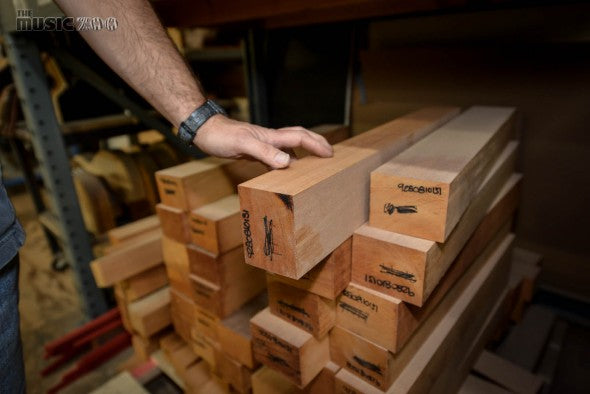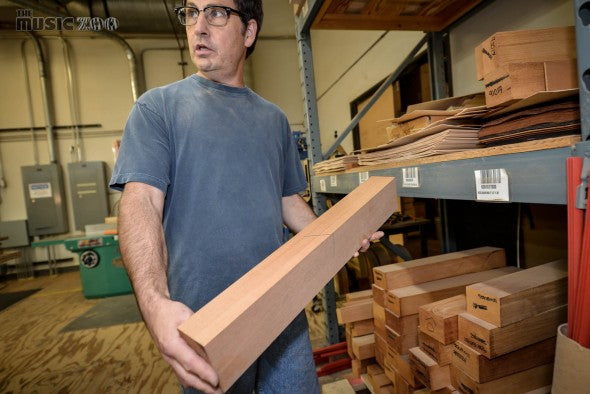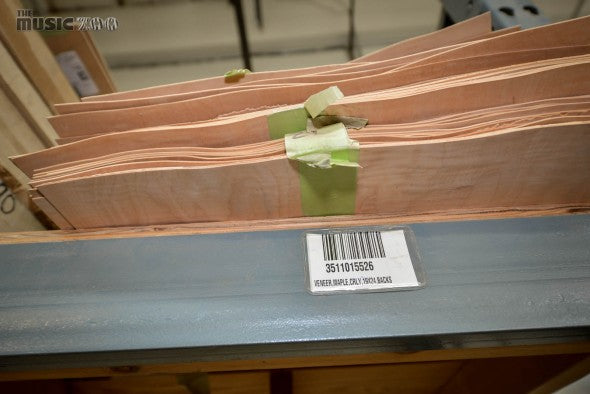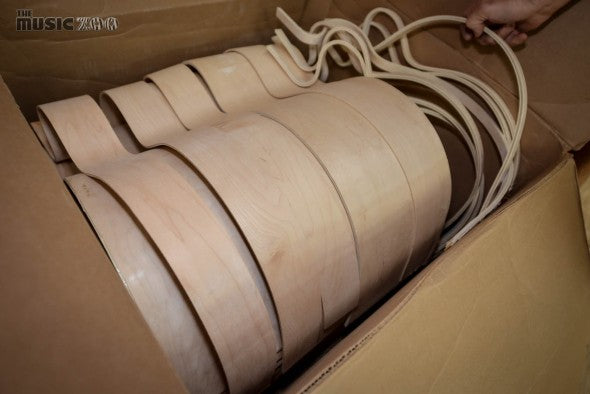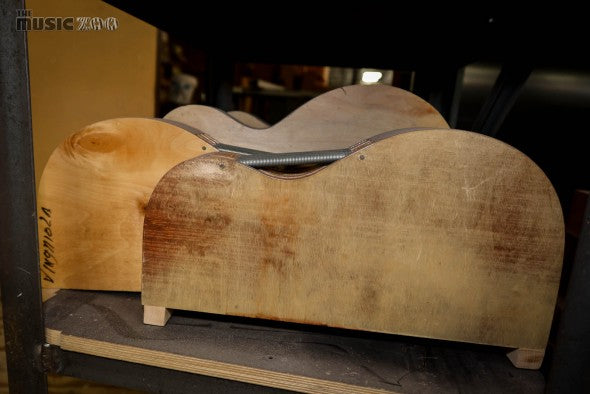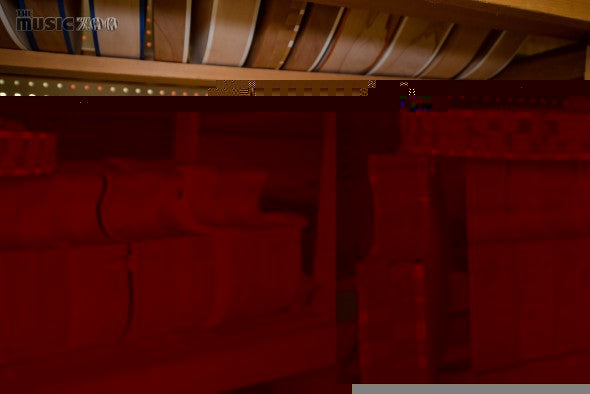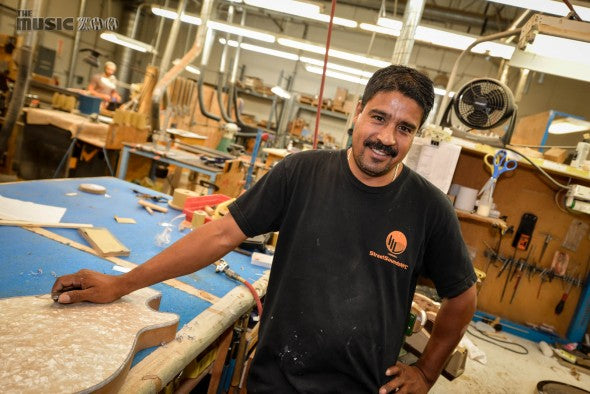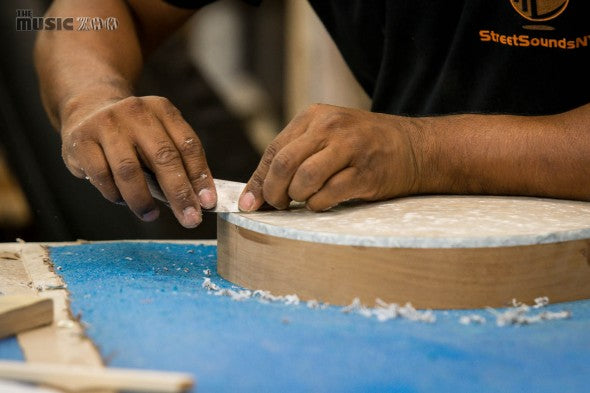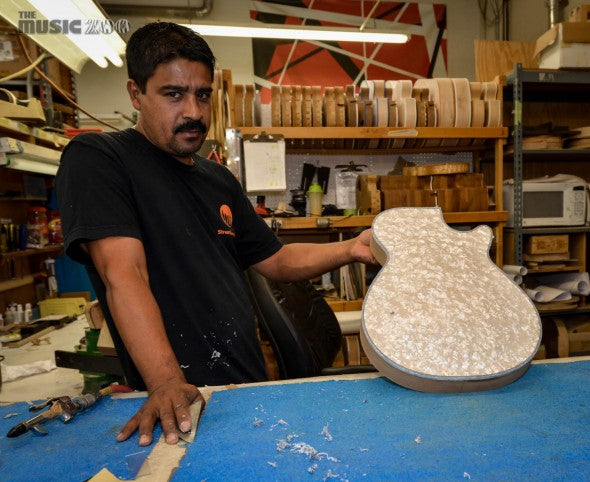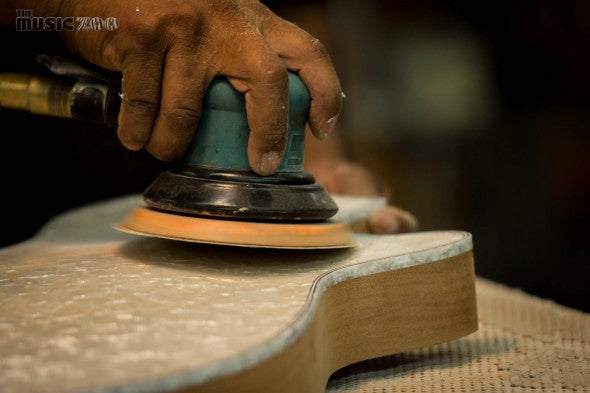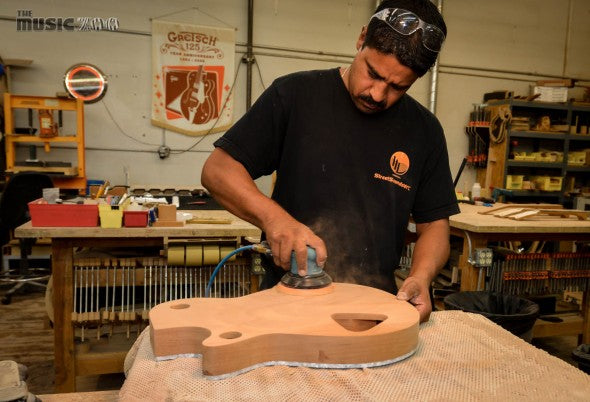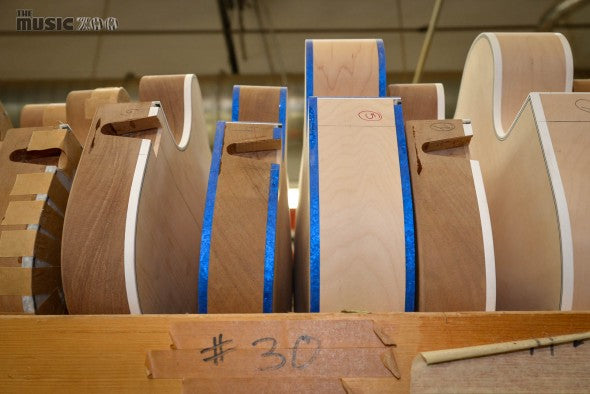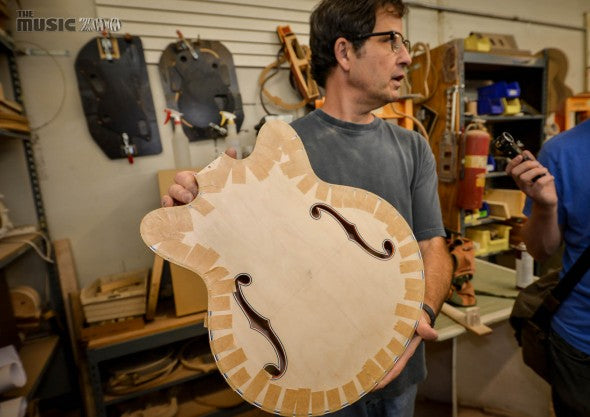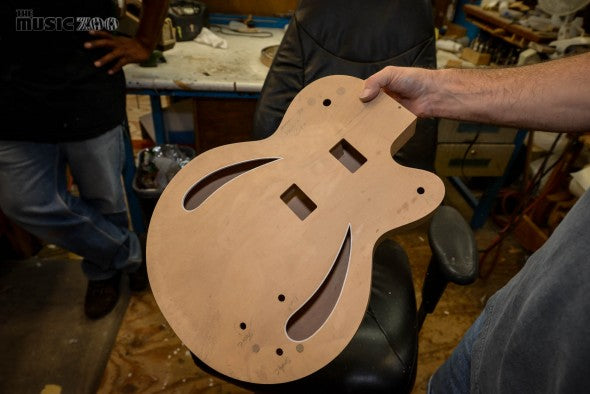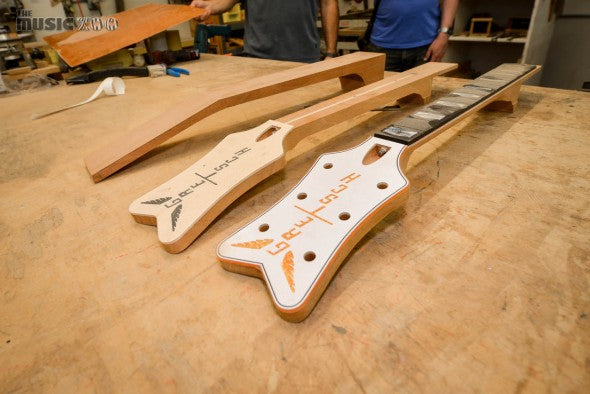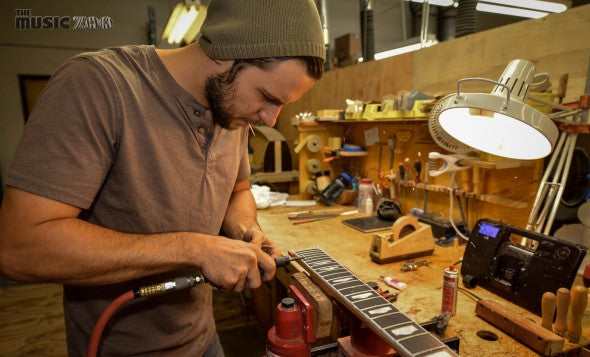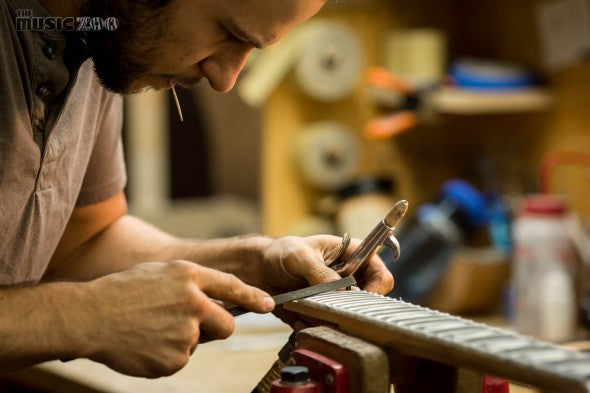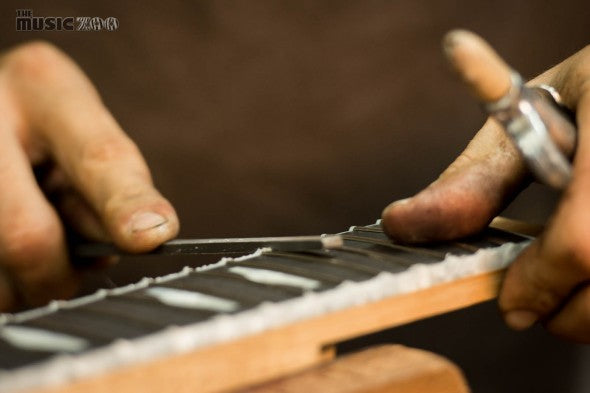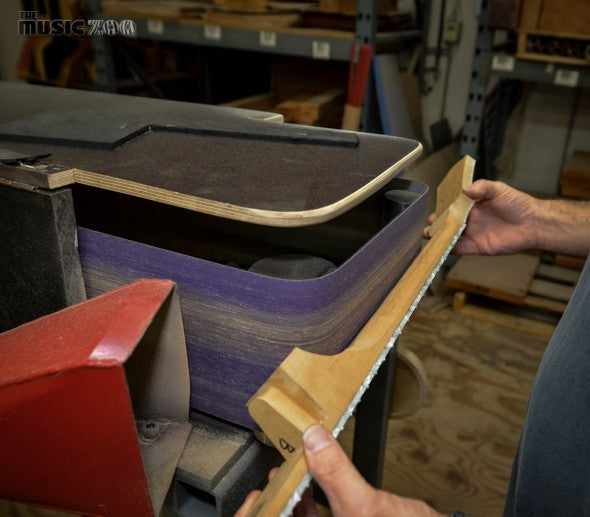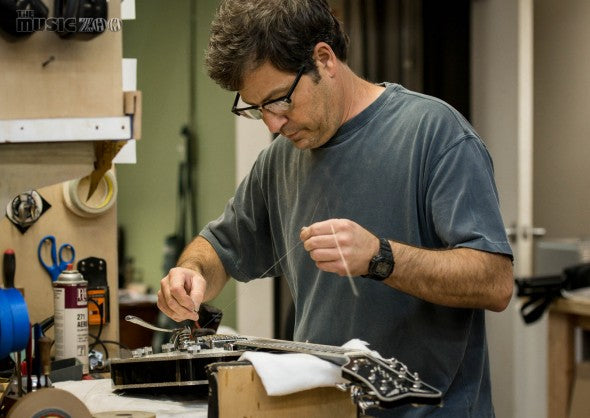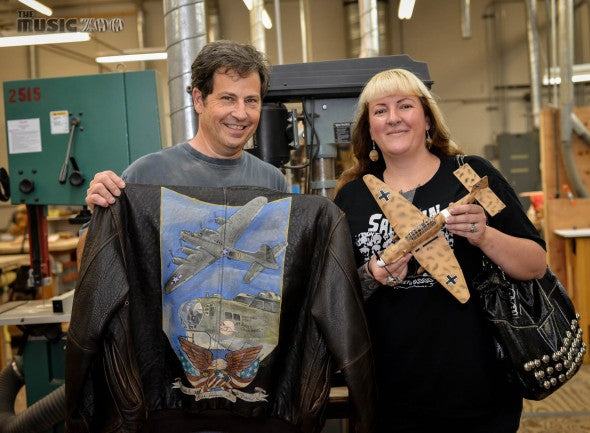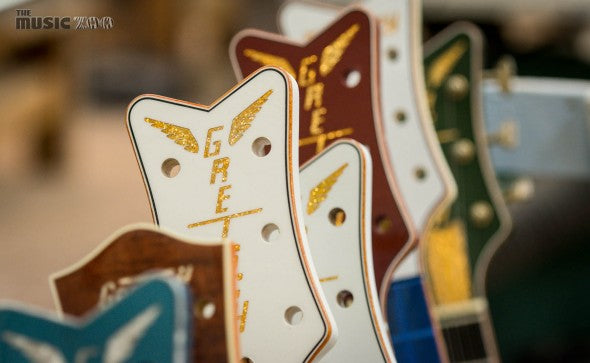Factory Tour: Stephen Stern & The Gretsch Custom Shop
The name Gretsch is one of the most revered in the history of musical instruments. Starting as a family business in the late 1800s making banjos and drums, Fred Gretsch Sr. and “that great Gretsch sound” left quite an impression on the 20th century producing unique, often hollowbody guitar models which would appear on records by the Beatles and into hands of landmark players like Chet Atkins. The 1950s and ’60s would prove to be Gretsch’s heyday. Unfortunately, hard times fell on the brand when Gretsch was sold to Baldwin pianos in 1967. Quality suffered, sales wilted, and Gretsch was eventually laid to rest by 1981.
However, the Gretsch family wanted their piece of American history back. They fought to regain control, and in 1989, they succeeded in acquiring and relaunching Gretsch. By 2002, they had built the brand back up to the point where Fender Musical Instruments Corporation (FMIC) bought the company, whose ownership continues to this day with close partnership with the Gretsch family.
So it’s a happy, all-American success story: the modern Gretsch brand exists today as the finest version of itself. The Gretsch Custom Shop is a high end workshop inside the Fender facility located in Corona, California. Under the leadership of Masterbuilder Stephen Stern, the Gretsch guitars of today are truly the best that have ever been built. A lot of manufacturers would like to say that their “reissue” guitars are as good as their vintage counterparts, but in the case of Gretsch, these modern guitars are simply light years ahead of anything from the past. Come with us as we take a walk around this workshop, where history is preserved and the future of Gretsch is being written…
This is Masterbuilder Stephen Stern’s workstation. Essentially, this bench is the home base of modern era Gretsch. Stephen is the spiritual torchbearer of the proud Gretsch tradition that streches all the way back into the 1930s, and is the man behind practically every major Gretsch guitar since Fender’s ownership. He manages a small team of talented builders who assist him in the workshop. Let’s check out the shop!”/><br> This is Masterbuilder Stephen Stern’s workstation. Essentially, this bench is the home base of modern era Gretsch. Stephen is the spiritual torchbearer of the proud Gretsch tradition that streches all the way back into the 1930s, and is the man behind practically every major Gretsch guitar since Fender’s ownership. He manages a small team of talented builders who assist him in the workshop. Let’s check out the shop!
Every great guitar started out as a great tree somewhere. Here are some body blanks that will become Duo Jets and Penguins. These are one piece mahogany spreads that have been weighed and inspected.”/><br> Every great guitar started out as a great tree somewhere. Here are some body blanks that will become Duo Jets and Penguins. These are one piece mahogany spreads that have been weighed and inspected.
The Penguin and Duo Jet neck blanks are also one piece mahogany.
Here’s Stephen showing us the quartersawn mahogany neck blanks. What’s quartersawn mean? It’s a technique for sawing a log at the lumber mill that ensures the grain is oriented in the strongest possible way. It’s more expensive, but totally worth it in a guitar neck, where stability is paramount.
We spied some curly maple veneers up on a shelf, undoubtedly to be used on the top or back of something fancy.
Here’s a box of pre-bent plywood that will become the sides of 6120 and Falcon guitars. Gretsch Custom Shop usually uses these pre-bent sides, it’s actually the same way they were put together 50 years ago. You can also see some of the kerfing Gretsch buys in the box as well.
For instances in which the pre-bent plywood sides aren’t going to work – for example, when a custom wood material is specified – Gretsch can custom bend the sides in house using these side benders.
These custom bender forms can be switched out inside the side benders to create different contours for different models.
The solid bodies are routed and get their shape on a CNC machine downstairs in the Fender factory. Then they come back up to Gretsch for the rest of the build. Some of these bodies have had binding glued on and are taped up for drying.
You’ve got to have a pretty steady hand with this router to get the F holes just right. We are always so impressed with how easy this looks for these guys.
Meet Gonzalo, another highly skilled builder working under Stephen who can build any piece of the Gretsch Custom guitars. He’s laid his hands on a lot of the high end tribute guitars that have come from Fender in the last 15 years.
We saw Gonzalo trimming the binding on the edge of this Duo Jet using a blade.
This already looks cool, but eventually this body will wear a deep coat of candy red nitro over that beautiful pearl material for an amazing effect.
Because this will be painted, the pearl needs to be sanded as well.
Sanding the back of the guitar to prep it for paint.
These custom one-off guitars were in process for the NAMM show and that flashy blue binding definitely caught our eye. Anything is possible!
We are really into this new idea that Stephen showed us: it’s a Falcon Junior. Basically a smaller Falcon hollowbody. Super cool.
Another really interesting new body style from Stephen Stern.
The evolution of a blank to a (nearly) finished neck can be seen in this photo. We just love the Falcon headstock design, there’s nothing else like it.
That famous gold binding material starts life as a giant sheet. The binding is cut to size by hand on this special saw.
An interesting note about the Gretsch necks is that they get fretboards, bound, side dots, and fretted before the neck is even shaped. Here’s a batch that are taped up to adhere the binding properly.
Next, the binding must be cut away from the fretboard and around the fret ends by hand. This is just super hard to do. He’ll start with a power tool to remove most of the material.
Then, he’ll move on to a file and start fine tuning the edges.
Meticulous, old school handwork is how Gretsch gets that great feeling on their necks. Look how clean the bound frets are to the right of the photo after he hit it with the file. Lovely.
Finally, the neck is shaped. This is done completely by hand, and completely by the builder’s sense of feel. Sure, they have template necks they can use for reference, but these guys basically know what the neck needs to feel like and they just go ahead and shape it. Awesome.
Once the bodies and necks are assembled they get painted and buffed in Fender’s facility. Then, the guitars are back to Gretsch for strings and final setup.
On an NOS (New Old Stock) guitar, the nut gets installed before paint. But this guitar will be a Relic, so the nut gets installed after the paint process to give the impression that it has been “replaced”. Just a little authentic touch.
Here’s Stephen back at his workstation hand wiring the pots on a Duo Jet.
Stephen is the setup master, and is the last word on quality control at Gretsch. As magical as many of the legendary Gretsch guitars from the 1950s and ’60s are, “consistent” and “quality” are two words rarely used together to describe them. Particularly in the Baldwin Era after 1967, the quality was simply not there. Thanks to Fender’s resources, Stephen Stern, and his talented crew.The modern Gretsch guitars are light years ahead of their vintage ancestors in every possible way.
Stephen and famed fine art painter Sara Ray hanging out together in the shop going over the details for some planned WWII inspired guitars. Sara painted that leather jacket as part of the project. Really cool stuff.




